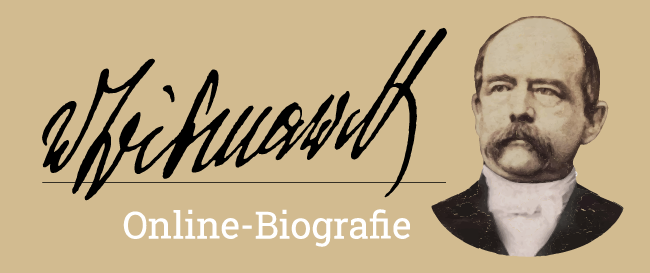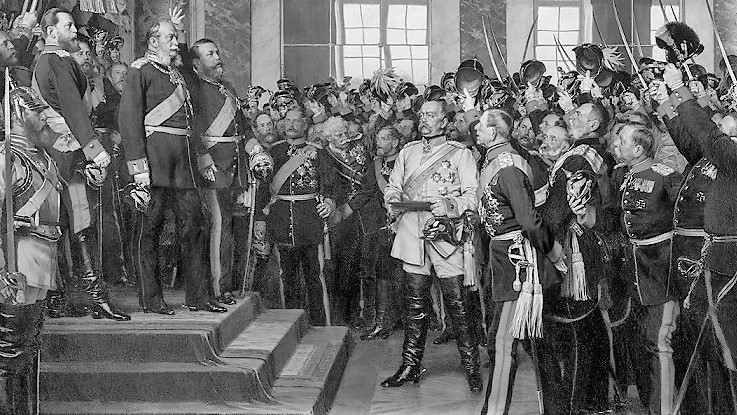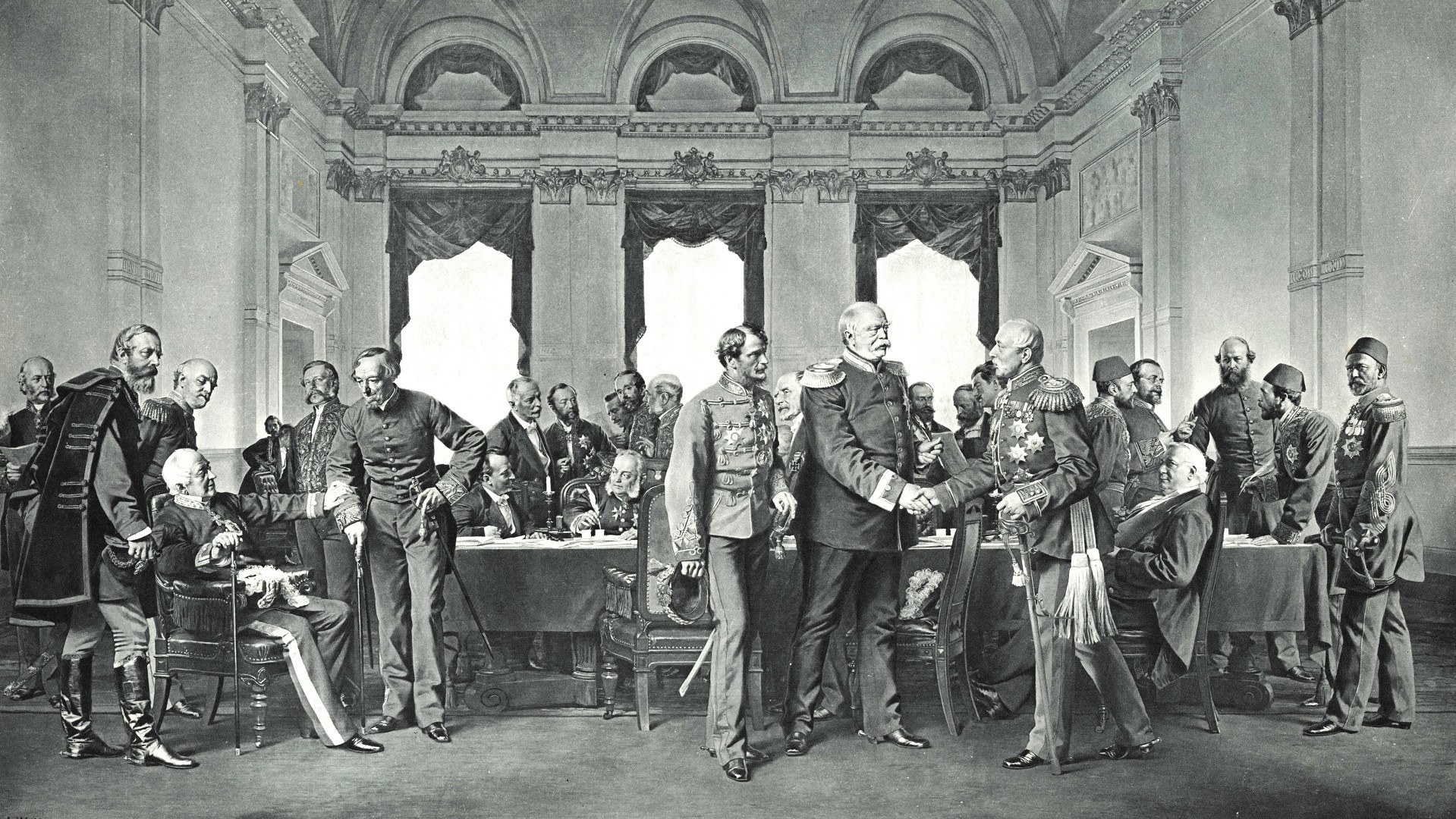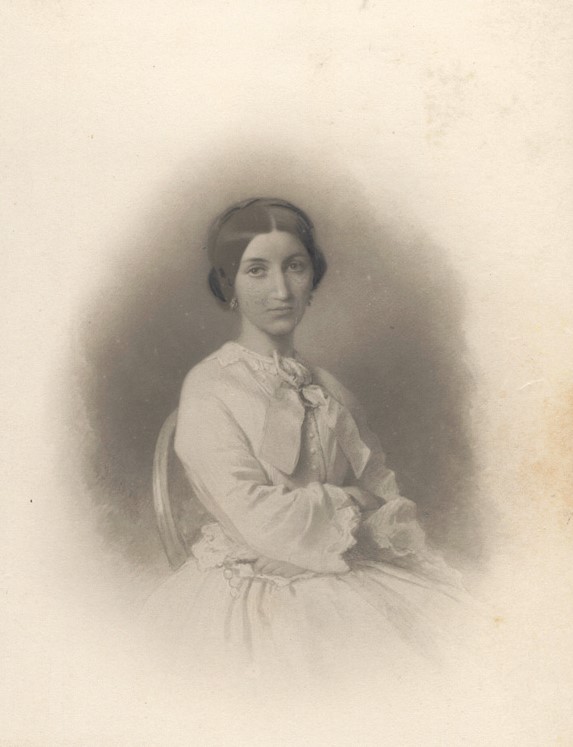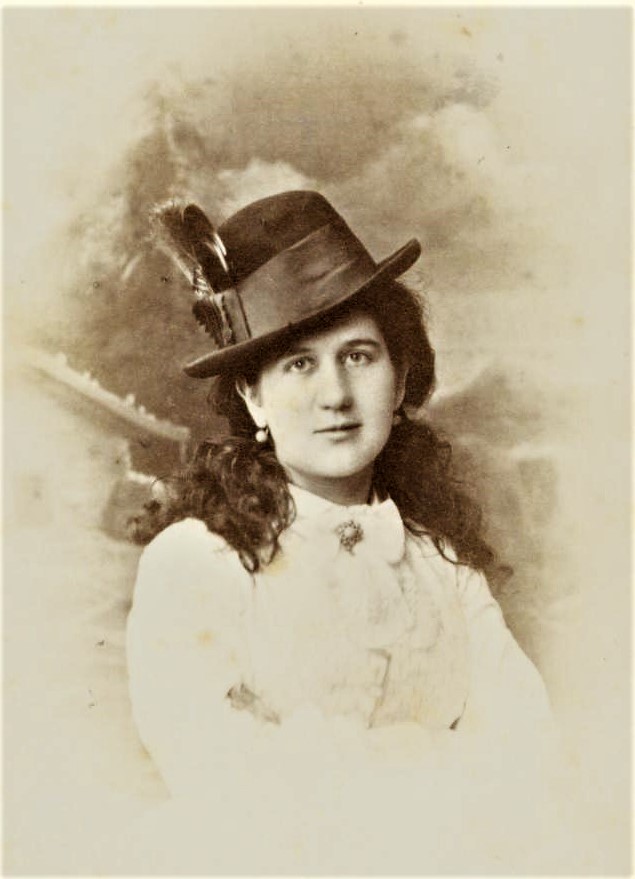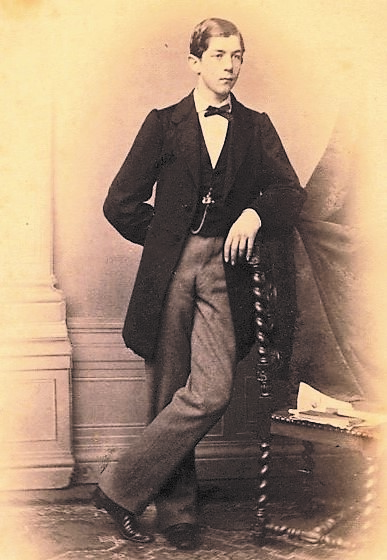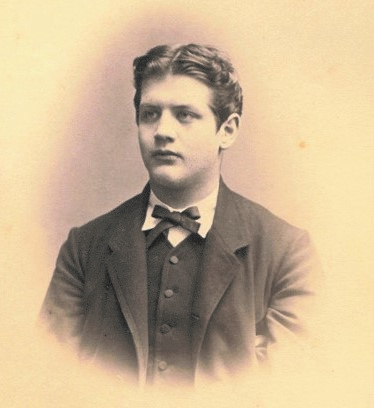Family bastion
Marriage and children
Even in the 19th century, aristocratic marriage served primarily to gain prestige. In this way, aristocratic families expanded their own house according to traditional social standards and continued it in accordance with their status. That also applied to Otto von Bismarck. This became increasingly important for him, not least because of his political ambitions. As a young man, however, his reputation as a "great squire" and therefore as a marriage candidate had been badly damaged.
Johanna von Bismarck, née von Puttkamer (1824 – 1894)
Otto von Bismarck's marriage to Johanna von Puttkamer on July 27th, 1847, paved his way as he had planned. The bride, who was nine years younger, came from a pietist family. Her family belonged to the religious revivalist movement, which endorsed a comparatively ascetic lifestyle, was strictly Bible-believing and emotionally pious. In Farther Pomerania, the Puttkamers were related to many of the landowning noble families living there and were correspondingly well connected in the local highly conservative political milieu. Marrying into this prestigious family facilitated Otto von Bismarck's access to circles that were particularly important for a political career at that time.
Otto and Johanna von Bismarck shared aristocratic pride, conservative views and acted as a working couple in diplomacy and politics. Johanna von Bismarck took on the usual official duties at public appearances in societies at court and other aristocratic circles, at her husband's side or alone. As a pietistic landed noblewoman, she had been brought up to be domestic, industrious and godly. With this attitude, she managed the politician's household and brought up their three children. These two areas belonged to the sphere of responsibility assigned to her as part of the working couple. Both household management and child rearing were therefore also entirely oriented towards Otto von Bismarck's needs. The children, Marie, Herbert and Wilhelm, were to become constantly available and unconditionally loyal supporters of their father. She herself became the indispensable organiser of the private retreat for the politician, which provided for what she saw as informal sociability.
Nevertheless, Johanna von Bismarck was not happy with her husband's chosen career. She was neither used to nor appreciated the high degree of mobility associated with it, including the repeated moves. Nor was she comfortable with public appearances.
The first phase of the marriage coincided with the time of the revolutions of 1848. Johanna von Bismarck saw them primarily as a threat to the traditional way of life of the East Elbe landowners, and this strongly mobilised her politically. Their joint involvement in the counter-revolution thus became a glue that kept the couple together. But when the attempts to preserve the old order had become an illusion, with the breakthrough of modernity at the latest, the meaning had been taken out of the conservative political struggle in Johanna von Bismarck's eyes. However, her husband did not share her longing for his resignation from politics, and she was not able to convince him. The dismissal of the aged Imperial Chancellor by the young Emperor therefore weighed all the more heavily in her eyes: like her husband, she felt it was a humiliation.
Like Otto von Bismarck, she fell ill frequently and even more severely than he did. Her dissatisfaction exacerbated her tendency to express hatred and agitation, mainly in the political sphere. In her aristocratic environment, this was extremely unusual for a woman.
Johanna von Bismarck died in 1894 in Pomerania, on the Varzin estate. However, she did not receive a final burial place until 1899, at her husband's side in the Bismarck Mausoleum in Friedrichsruh.
Marie in Rantzau, née von Bismarck (1848 – 1926)
Marie von Bismarck was born in Schönhausen as the eldest child of Otto and Johanna von Bismarck. At first she benefited enormously from the home schooling she shared with her brothers. She regarded their transfer to a grammar school and university as a personal setback. For, as a girl, she had to remain at home, as was typical of the time. It was also a heavy blow for her as a young woman that her first fiancé, Wendt zu Eulenburg (1845 – 1875), died suddenly.
All three children became involved in their father's political life. Marie's workload was extensive: she stood in for her mother at representative appearances at her father's side and cared for the statesman, who was repeatedly ill but still active at an advanced age.
In 1878 she married Kuno zu Rantzau. After the marriage, he was also assigned tasks in the politician's budget. In addition to his diplomatic posts, he took on secretarial services for his father-in-law Otto von Bismarck, although not always to his or his own satisfaction.
None of this corresponded to the politician's daughter's dreams of life, and yet she did not succeed in breaking away from her parents. This resulted in tensions that led to Marie withdrawing more and more into herself. She also got into a vicious circle because of her becoming somewhat overweight later in life: the social norm, according to which she was therefore considered outwardly unattractive, exacerbated the inner insecurity stemming from family constraints. The mother of three sons, two of whom died before her, suffered severely from this until her lonely death.
Herbert von Bismarck (1849 - 1904)
The focus on the eldest son corresponded to a traditional conception of nobility. In this sense, too, the Imperial Chancellor and minister-president had always depended on the support of his elder, Berlin-born son Herbert. After studying law in Bonn and initial stages of training in the civil service, he had been in the foreign service and officially his father's private secretary since 1874. His entry into the Foreign Office marked the beginning of a career in the oldest imperial office – apart from the Chancellery - which was also considered the most distinguished of the authorities.
For Herbert, the diplomatic service meant following in his father's footsteps professionally as well. Herbert von Bismarck proved to be adept in this field of work and rose rapidly in position. He was a legation councillor from 1880, went to London as embassy councillor in 1881, moved to St. Petersburg in this capacity in 1884 and to The Hague in the same year. In 1885 he became undersecretary of state, then in 1886 secretary of state of the Foreign Office and in 1888 Prussian state minister. He was also a member of the Reichstag, from 1881 to 1889 for the Deutsche Reichspartei (German Imperial Party), and from 1893 onwards as an independent member of the Reichstag.
For Herbert von Bismarck, professional proximity to his father thus also meant the option of a great, promising and interesting career from the very beginning. In view of this, finding a suitable wife for him was a decidedly sensitive matter. His early love for the married Princess Elisabeth zu Carolath-Beuthen, who got divorced for him and was much older than he, therefore did not result in marriage. Otto von Bismarck prevented this union by all means, also because he resented her family background. Otto von Bismarck again opposed Herbert’s second attempt at marriage to a divorced noblewoman, which would also not have been conducive to his son’s career.
The feeling that he had betrayed his great love Elisabeth zu Carolath-Beuthen turned Herbert von Bismarck into a restless, cynical man with broken health. His boundless loyalty to his father included leaving the civil service with him in 1890, against the Emperor’s wishes. It was only with the much younger Countess Marguerite von Hoyos that he found a partner in 1892 who was agreeable to his parents. When the youngest of his five children was only one year old, he died after a long illness. His wife survived him by 41 years and, like a guardian of the Grail, devoted herself to the legacy of her father-in-law and husband.
William of Bismarck (1852 - 1901)
Born in Frankfurt am Main, the younger son Wilhelm, called Bill, von Bismarck passed his second state law examination in 1878. As a member of the Deutsche Reichspartei (German Imperial Party) he held a seat in the Reichstag from 1878 to 1881, and from 1882 to 1885 he was a member of the Prussian House of Representatives. From being an assessor in the Imperial Chancellery and a member of the staff of the governor Edwin von Manteuffel in the "Reichsland" Alsace-Lorraine in Strasbourg, he rose in 1885 to become District Administrator of the Hanau district, then in 1889 District President of Hanover, and finally in 1895 Chief President of East Prussia.
Comfort-loving by nature and almost without ambition, he would have preferred to remain district administrator. Possibly, however, Hanau also gained in attractiveness because the town was comparatively far away from Friedrichsruh, Varzin and Berlin. Bill also managed to free himself from his parent’s predominance by his choice of wife. Although she was from the immediate vicinity, this choice removed Bill from his parents' grasp as much as possible. He married his cousin Sibylle von Arnim-Kröchlendorff, a daughter of Otto von Bismarck's sister Malwine von Arnim. Therefore, the parents were unable to intervene in this case. But their ambition, dominance and coolness repeatedly led to tensions in the family, from which a certain distance arose of its own accord. Wilhelm von Bismarck was the father of four children. He was the first of the siblings to die.
